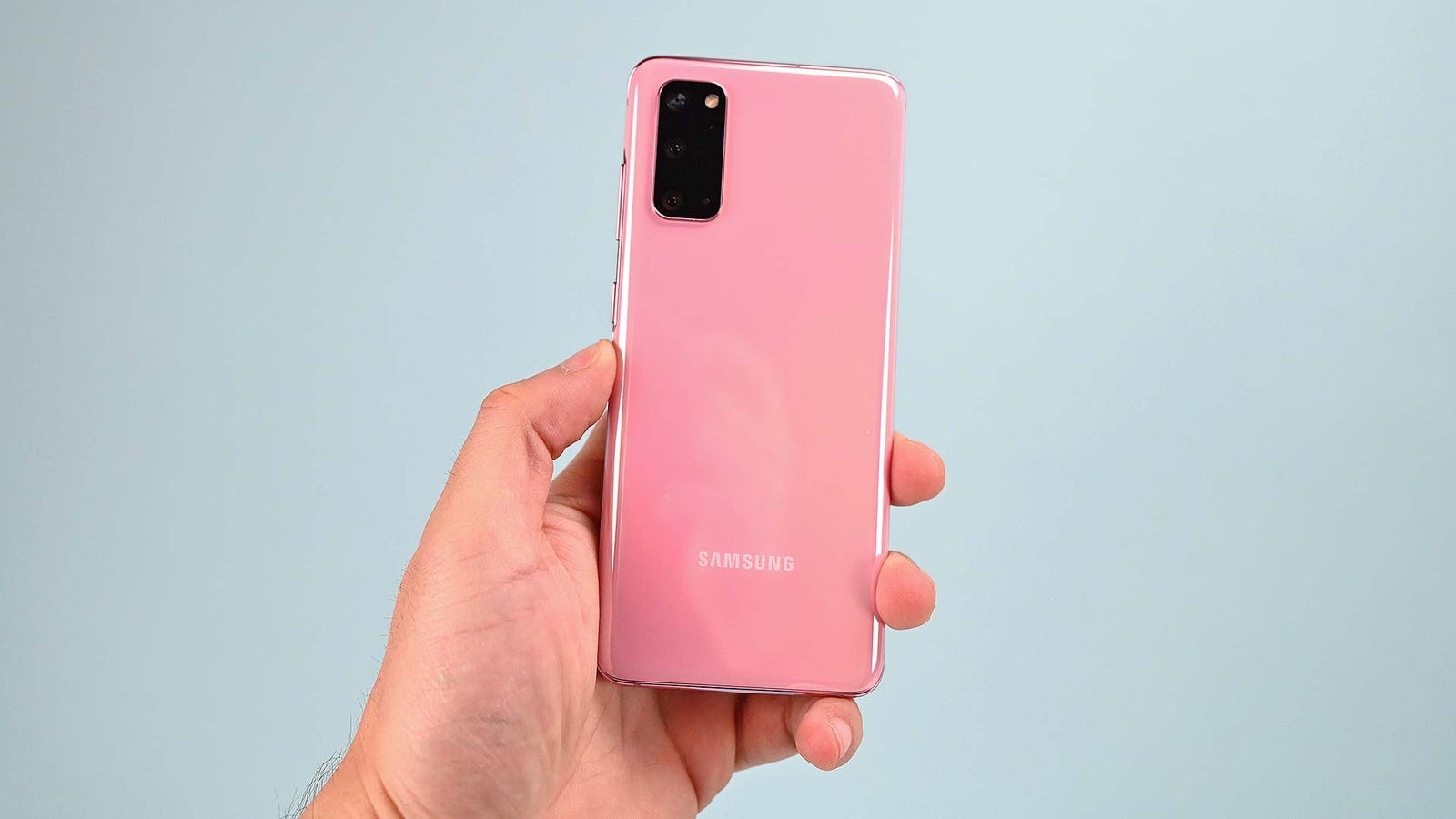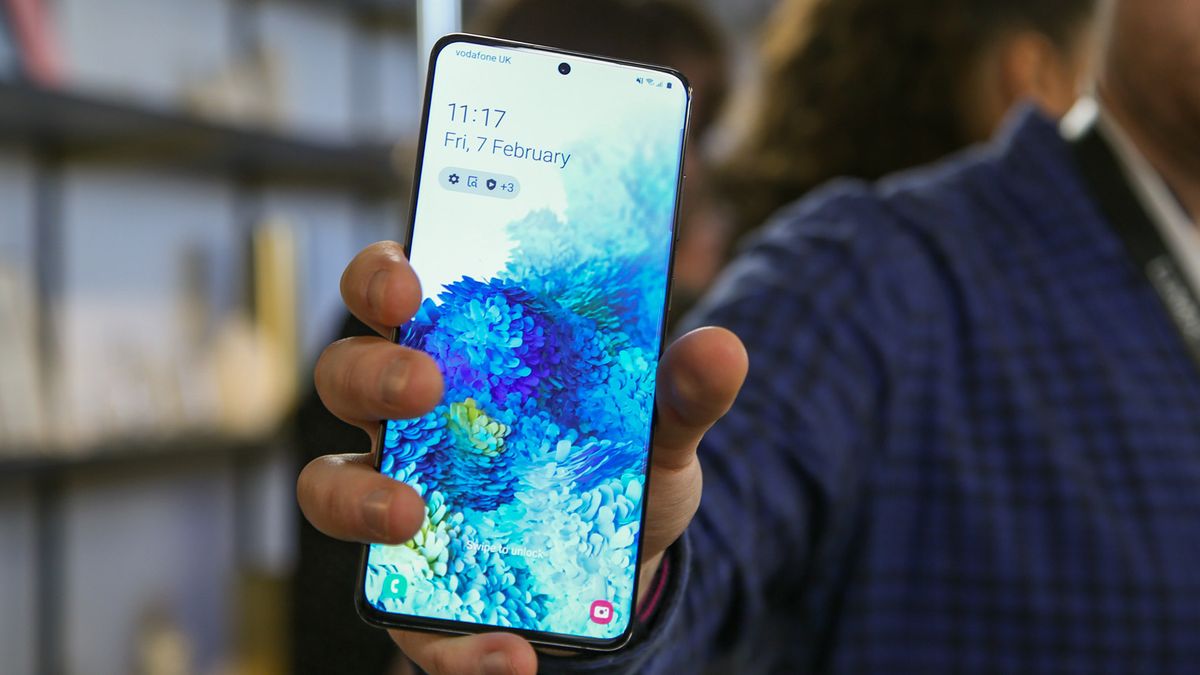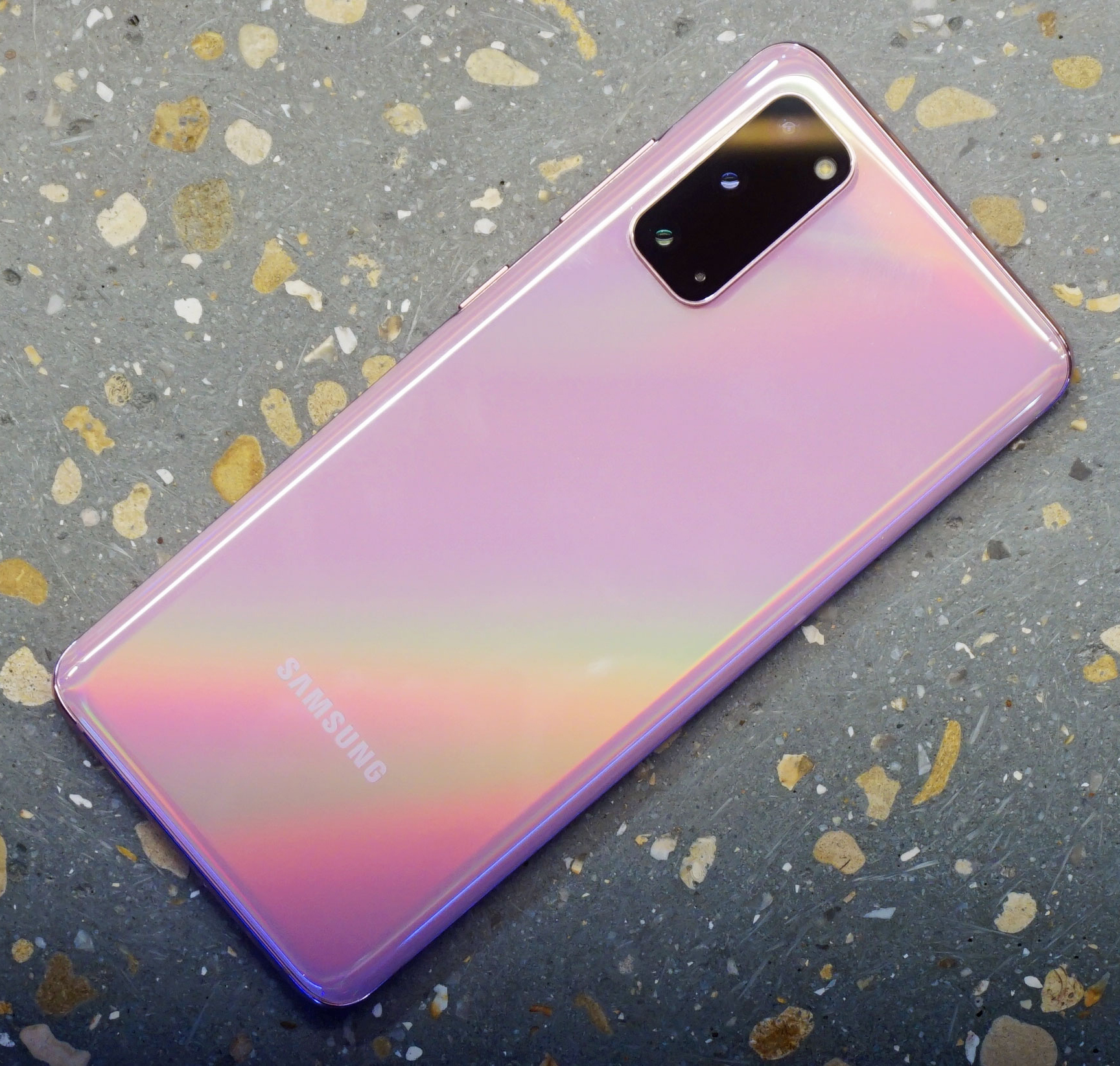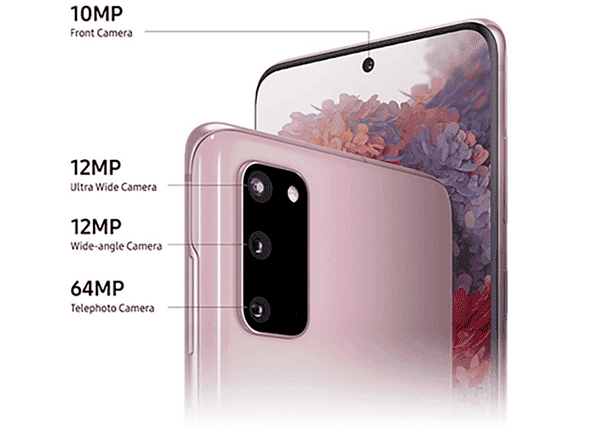Samsung Galaxy S20 review
Samsung Galaxy S20 review
5G, a 120Hz display and more debut on the Galaxy S20

OUR VERDICT
The Samsung Galaxy S20 isn’t the most cutting-edge of Samsung’s S20 lineup – that honor goes to the Galaxy S20 Ultra – but it’s still a powerful phone with an ergonomic and attractive design, and the introduction of new features like 5G, the 120Hz display and upgraded rear cameras make it an outstanding handset in its own right.
FOR
- A truly fantastic display
- Strong camera performance
- Lots of power and 5G-ready
AGAINST
- Price is higher, especially for 5G
- Erratic fingerprint scanner
- Doesn’t support all 5G networks
Samsung Galaxy S20 deals
Samsung Galaxy S20 two-minute review
What happened to the Galaxy S11? Samsung skipped a few numbers for its latest Galaxy S20, which takes over the flagship mantle from 2019’s Galaxy S10. While it may be a confusing jump, there’s good reason for it, as Samsung has packed a lot in: it's a massive upgrade, especially if you’re keen to get your first 5G phone.
The Galaxy S20 is cheaper, and easier to handle, than the Galaxy S20 Plus and gargantuan Galaxy S20 Ultra, but that doesn’t mean this is a cheap or low-spec device.
Here's what you're getting: a 6.2-inch screen with a fast 120Hz refresh rate, 5G download speeds (where available), high-spec cameras on both sides of the phone, and a big battery to boot.
This is the phone to get if you want to try out the new tech that Samsung has to offer, but you don’t want a large phone, or a large dent in your wallet. You could go for the Ultra if you want more storage or a 108MP camera, and can stretch to the price tag, but for day-to-day use the S20 is going to be the best choice for most people.

Under the hood is a powerful new chipset, either a Qualcomm Snapdragon 865 or Exynos 990 (where you live will determine which you’ll get) as well as either 8GB or 12GB of RAM, depending on whether you buy the 4G or 5G phone. And some people will only be able to buy the 5G phone – you can read on below to find out which versions are available in your region.
The camera is another highlight of this phone, with Samsung boosting a lot of specs on the rear array. All three main cameras have been improved (including increased pixel sizes to improve night time photography by allowing more light in), and there are also a few software tweaks to improve the overall experience.
The telephoto lens is even better than the one on the Galaxy S10 too, allowing you to shoot high-quality 3x optical zoom shots or stretch all the way to a 30x digital zoom. The Galaxy S20 Ultra has higher camera specs overall, but most people will be more than satisfied with the shooter on this phone.
Another highlight of the Galaxy S20 is its 4,000mAh battery. It’s larger than the cell in the S10, and we’ve found the battery life to be strong with typical use – this phone isn’t going to last you much longer than one day of normal use, but what smartphone does?
The expanded capacity has had one negative consequence: it’s squeezed out the headphone jack. It's the same story with the S20 Plus and S20 Ultra, and it's the first time Samsung has dropped the feature from its S range.
The Galaxy S20 is missing some of the top-end features that the Galaxy S20 Ultra is showing off, but it’s more affordable, and easier to hold or store in your pocket, and while it may not be the most impressive device from Samsung in 2020, it’s a powerful phone that will more than satisfy most who buy it.
Want to read more about what we think of the Galaxy S20? Read on below:

Samsung Galaxy S20 release date and price
Brace yourself: you’re going to pay more for the Galaxy S20 than the Galaxy S10 due to its 5G upgrade, improved cameras and larger 6.2-inch 120Hz display.
In the US, UK and Australia the Galaxy S20 5G price at launch is $999 / £899 / AU$1,499 for the version with 128GB of storage and 12GB of RAM. You can add extra storage with a microSD card up to 1TB, but if you want 256GB or 512GB of internal storage you’ll have to buy the S20 Ultra.
The phone is also available in a 4G version in some markets, including the UK, Australia and UAE, priced at £799 / AU$1,349 / AED 3,199 for 8GB of RAM and 128GB of storage. If you live in the US, you'll only be able to get a 5G variant.
That 4G phone aside, the addition of 5G means you're paying more for this year's base model than for the base-model S10. In the US at least, the flagship inherits the Galaxy S10 Plus launch price – $100 more than the base-model S10. It also matches the $999 iPhone 11 Pro launch cost in the US, although Apple’s phone has a smaller 5.8-inch display, and that price gets you just 64GB of storage.
- Ready to buy? These are the best Samsung Galaxy S20 deals today
Design and display
 |
| (Image credit: Future) |
The Samsung Galaxy S20 has a 6.2-inch display, offering exactly 0.1-inch more screen real estate than 2019’s 6.1-inch S10. It doesn’t dramatically change the overall size of the phone, and its max resolution remains the same as that of recent Samsung Galaxy S models at WQHD+ (3040 x 1440).
Samsung is still offering a default resolution of Full HD+ (2220 x 1080), which looks more than sharp enough for most tasks, and saves battery; you’ll need to head into the settings to switch to the higher resolution.
A big upgrade for the Galaxy S20 is the maximum 120Hz refresh-rate display. This is double the rate at which the display refreshes on most phones, including previous Samsung devices, and what it means in practice is smoother scrolling and animations.
A big upgrade for the Galaxy S20 is the maximum 120Hz refresh-rate display. This is double the rate at which the display refreshes on most phones, including previous Samsung devices, and what it means in practice is smoother scrolling and animations.
This is particularly pertinent when you’re mobile gaming as it allows for a more immersive experience and could even give you the edge over an opponent, but it makes everyday things like scrolling through your social media feeds look smoother too.
Advertisement
This isn’t the first time we’ve seen this on a smartphone - both the Asus ROG Phone 2 and Razer Phone 2 feature similar tech - but this is arguably the first time we’ve seen it on a mainstream device.
The new 120Hz refresh rate isn’t WQHD+-compatible though meaning you have to pick whether you want the higher resolution display or the faster loading picture.

Touch-sensitivity is also upped, to 240Hz from 120Hz to make games more responsive, by sensing your finger brushes on the screen at a much higher rate than previously. This isn’t something we found noticeable when we were using the phone, but those more dedicated to their mobile gaming may find that it makes a difference.
We know an increase in screen size might be off-putting for some (there’s pent-up demand for smaller one-hand-friendly phones), and we have good news and bad news about that. First the good news: while the S20 is taller than the S10, it’s also a little narrower, with a 20:9 aspect ratio, and the screen is only marginally bigger.
Here’s the bad news: there’s no Galaxy S10e sequel (that was the smallest, and cheapest, of the S20 range) to offer those with smaller hands a 5.8-inch display size.
The S20 is as small as Samsung’s 2020 S phones get, and while we appreciate the smaller front-facing camera punchole and return of HDR10+ to the display for punchier and more detailed images when gaming and watching movies, a bit of screen size diversity would be even more welcome.
The Galaxy S20 has one of the best screens available on a smartphone right now, and if you’re after a top-end phone screen that doesn’t overwhelm your pocket you’re sure to like the 563 pixels per inch this phone offers.
The rest of the Samsung Galaxy S20 sports a familiar look, with two pieces of glass sandwiching an aluminum frame. There’s still a curve to the right and left edges of the screen, but it’s not as pronounced as on the S10, which will hopefully mean fewer accidental presses along the edges of the display.
The S20 phones are the first in the S range not feature a 3.5mm headphone jack. That means you’ll have to use an adapter (which isn’t included in the box) with your current 3.5mm wired headphones, or get a pair with a USB-C connection.

This is the case with a lot of flagship phones now, and while it may disappoint some, the feature is less of a deal-breaker with more and more of us using wireless and true-wireless headphone and earbuds – and of course Samsung has you covered with its own Galaxy Buds and Galaxy Buds Plus.
The rear of the phone is made of glass, but it feels more premium than ever. The raised camera bump is our main pain point, but it’s something that Samsung has had to do in order to include all that camera tech. It does mean the phone will rock from side to side if you place it flat on a surface though.
Advertisement
There are five Galaxy S20 colors in total, but not all of these are available in every market. The options are Cloud Blue (the handset pictured most in this review), Cosmic Gray, Cloud Pink, Cloud White and Aura Red.
Those in the US, UK and Australia will only be able to choose from the Cosmic Gray, Cloud Blue and Cloud Pink options at launch, but you may also be able to find the others at a later date. It’s worth pointing out that there aren’t any bold color choices here, and these are all relatively subdued options compared to the Galaxy S10 color range.
As on the S10 range, the fingerprint scanner is embedded in the display. We found this to be faster and more reliable than the option on the Galaxy S10, but it isn’t perfect with us regularly having to retry our digits on the reader to be able to access the phone.
This isn’t a major issue, but if you want to quickly unlock your phone you may want to bear in mind that in our experience a quick PIN code entry can sometimes be quicker than using the scanner.
Camera

Samsung has made some important steps forward with the camera setup on the Galaxy S20 when you compare it to the Galaxy S10, but not all of the improvements are reflected in the stats you see in the spec list.
We think it’s best if you take the plethora of number-heavy camera specs with a pinch of salt, and instead consider what they mean in terms of the photos you can capture. Otherwise the S20 cameras could look like a downgrade compared to previous Samsung devices, and that’s far from the case.
The main camera, which remains 12MP, has an f/1.8 aperture. That’s theoretically inferior to the S10’s f/1.5 + f/2.4 dual aperture, which changes to suit the lighting conditions with the ‘wider’ f/1.5 setting pulling in more light for improved low-light shots.
However, Samsung has increased the size of individual pixels here, from 1.4 microns to 1.8 microns. Combined with the larger sensor, you should be able to capture more detail and more light with the Galaxy S20’s main snapper, and we found that to be the case when shooting in darker scenarios.
There’s also a new 64MP telephoto camera, which may sound like a huge upgrade over last year’s 12MP telephoto camera. Here the individual pixels are smaller than last year’s camera, but the megapixel count is far higher and the aperture is wider (f/2.0 instead of f/2.4 – smaller numbers are better).
Advertisement
It’s a positive result overall, allowing for 3x lossless zoom that’s the best we’ve seen on a smartphone so far. There’s also 30x digital zoom if you need it, and while this isn’t lossless we found it to be useful in some scenarios.
If you need the ultimate in zoom capability the Galaxy S20 Ultra comes with a game-changing 100x zoom, but it’s unlikely that you’ll find much use for that in everyday shooting, and we found 30x to be more than enough.
The Galaxy S20’s 12MP ultra-wide camera has changed the least compared to the S10 – the f/2.2 aperture is the same, but it has a smaller sensor with larger pixels (1.4 microns over last year’s 1 micron). That makes your ultra-wide photos a touch better, even if the S10 had a 16MP ultra-wide camera.
Advertisement
We found all the cameras to work brilliantly well, and if you’re shooting in the automatic mode you’re sure to be impressed with the results. You can see some of the shots we’ve taken below:
The Galaxy S20 Plus and Ultra both have a time of flight sensor that is missing from this phone. Even without it, the S20 is well capable of taking some fantastic-looking photos.
The S20 range also breaks new ground with the introduction of 8K video recording, and anti-roll correction (up to 60 degrees) as part of Samsung’s Super Steady stabilization feature.
You can’t, however, use both this higher resolution and Samsung’s advanced stabilization tech at the same time – Super Steady is still strictly a 1080p affair (it doesn’t even work in 4K).
While 8K recording is limited to 24fps, it has one big benefit: you’re able to crop and edit videos without sacrificing quality if you’re exporting to 4K or 1080p.
8K is a feature that’s still in its infancy on smartphones, and we imagine that most people will be happy shooting at 4K or below, where you get more control over frames per second, 20x video zoom (8K is stuck at 6x zoom), and smaller files (8K footage will eat about 600MBs per minute in the HEVC format).

If you do decide to shoot in 8K, you can hit the camera button when you're recording to take a 33MP still image. This should be useful if you want a high-quality snap while you're already filming video.
Samsung’s robust-yet-easy-to-use camera app continues to be the best among smartphones, thanks to new and returning features. We continue to like the fact that you can swipe anywhere on the screen to flip between the front and back cameras, make a hand gesture to trigger the selfie camera timer, and double-press the physical lock button to blindly launch the camera app.
New here is Single Take mode, which cycles through all three rear cameras over the course of 10 seconds to capture a variety of photos and videos. It answers the ‘Should I take photos or a video?’ dilemma with ‘Why not take both?’
You end up with photos, ultra-wides, portraits, hyperlapse video, regular video, and so on, and we’re big fans of this feature – not every shot or clip is perfect, but it kept us out of the settings menus and more engaged with what we were trying to snap, and it changed the way we shot photos.
For latest technology news and reviews, please follow our Facebook page or Instagram account!
If I like this article, you can visit my YouTube channel. Thank you!

















No comments